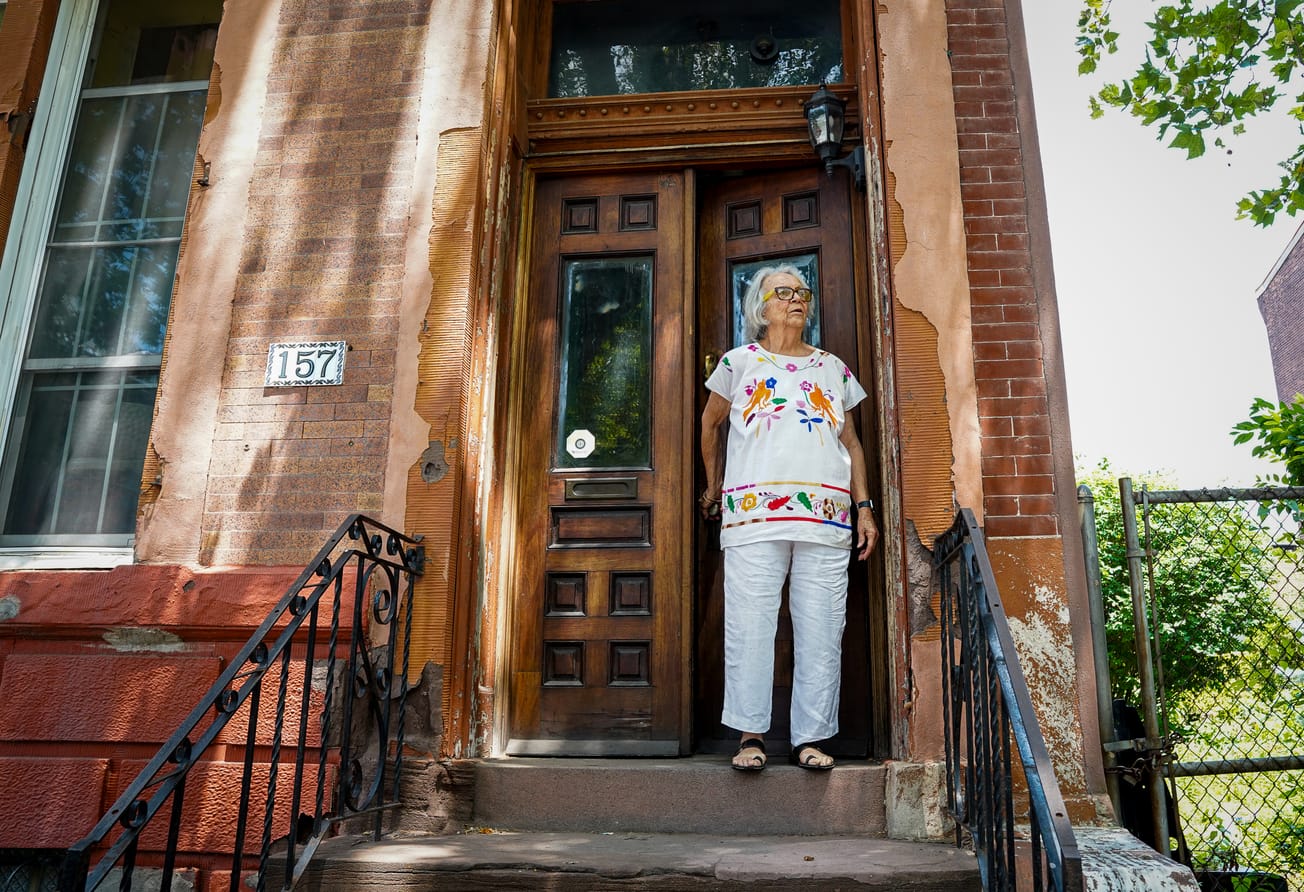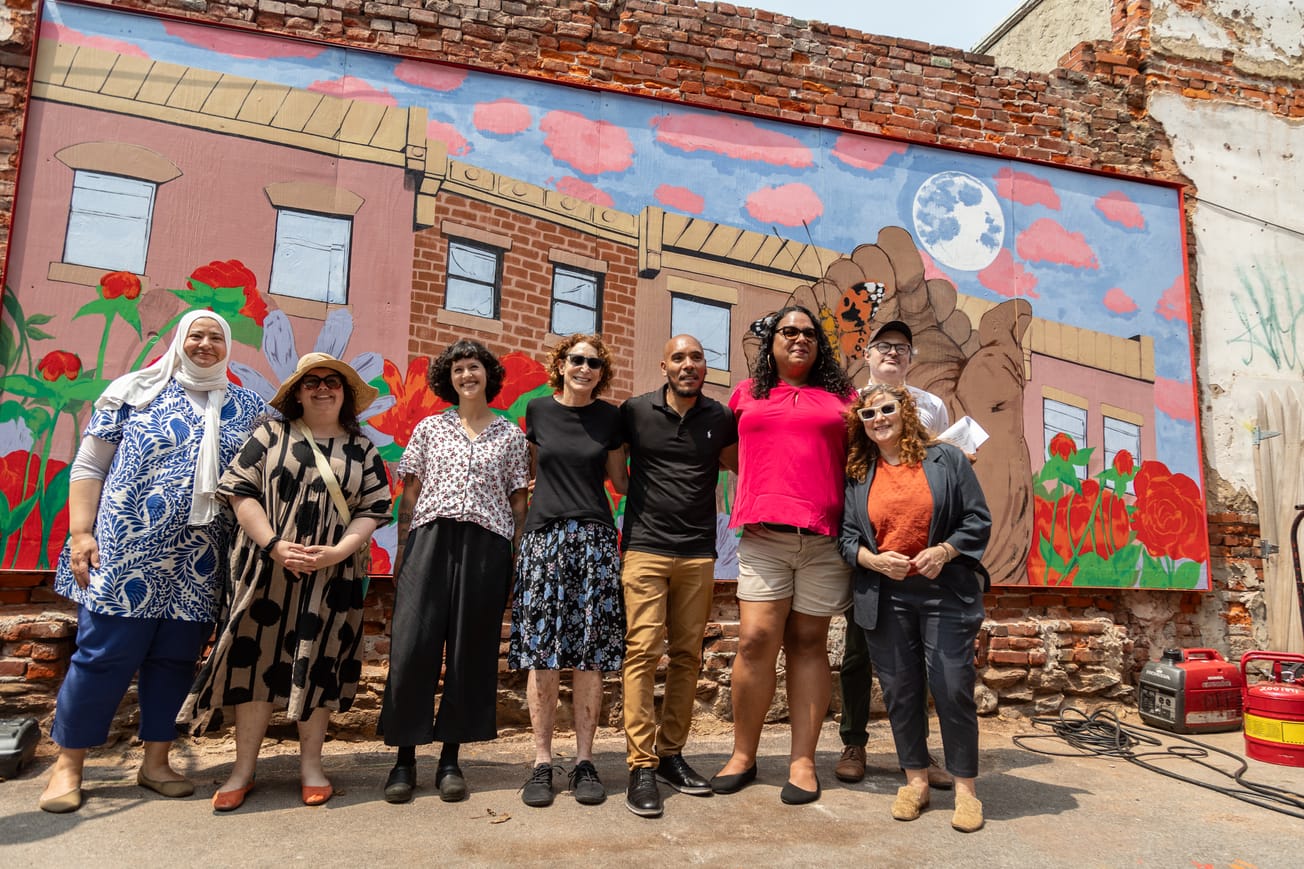Correction: The original version of this story misstated the locations of methadone and buprenorphine delivery in PDP facilities.
This story was also updated to more accurately describe the intake area, the PDP officer shortage, the medical screening process, and what is provided to people exiting incarceration.
On a steamy spring afternoon in Northeast Philadelphia, a man pressed his cheek against the window of a holding cell at the Curran-Fromhold Correctional Facility on State Road. His face was distressed, and his eyes were wide.
The air was warm and stuffy. Few guards were in sight.
“We been in here for 12 hours!” a man yelled across the cell block as the jail’s staff walked by.
Curran-Fromhold is the intake facility for all men incarcerated in Philadelphia. It used to take four hours for new arrivals to get a medical assessment there, but due to a 50% officer vacancy rate that’s persisted since 2020, it now takes 15. That’s according to Bruce Herdman, chief of medical operations for the Philadelphia Department of Prisons.
Herdman says the officer staffing shortage makes it difficult to deliver timely, high-quality care for the approximately 4,700 people incarcerated in Philadelphia’s jails daily – a majority of whom present with substance use disorder.
“We have a whole bunch of standards that we're not meeting – it's very frustrating,” he said. “There's no easy answer to this security shortage at the moment … we don’t have enough, and we don’t have a choice.”
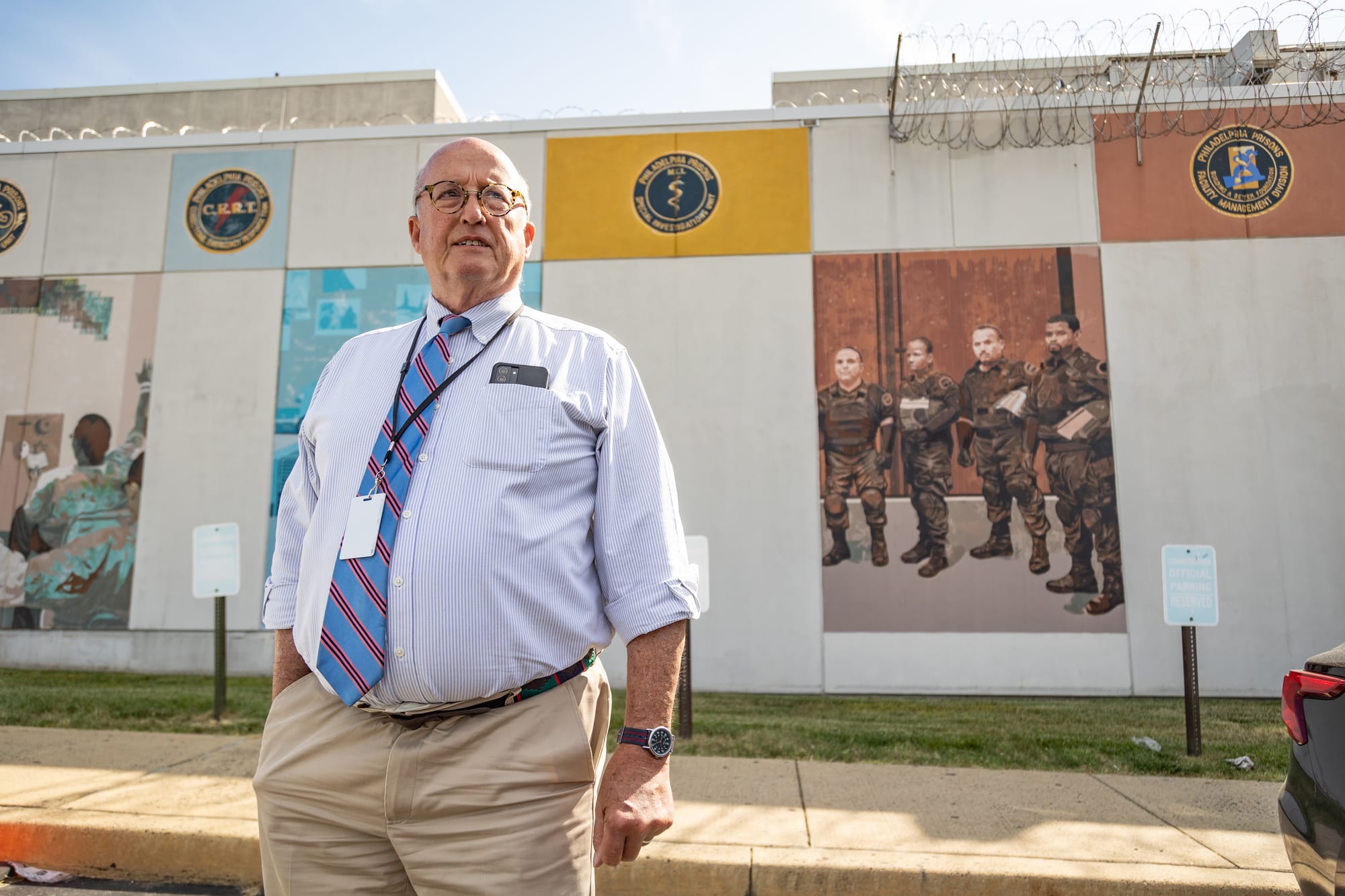
It’s unclear whether the number of people incarcerated in the city’s jails will increase this summer as the Philadelphia Police Department begins the second phase of Mayor Cherelle Parker’s five-phase initiative to shut down Kensington’s open-air drug market. Herdman says the prison system’s staff has been preparing for “a wave of people coming from Kensington,” but he hasn’t seen an influx yet.
Despite the prison system’s staffing shortage, some Philadelphia City Council members have suggested the large-scale incarceration of people who use drugs as a method of increasing addiction treatment access and reducing street homelessness in the neighborhood.
Councilmember Quetcy Lozada, one of the four members of the Kensington caucus, told Kensington Voice in January that she had recently toured Philadelphia’s jails and felt hopeful about the prison system’s ability to respond to the neighborhood’s addiction crisis.
“Do they have the capacity to be able to bring these folks in if we were to do something on a large scale where we pick people up? Can our prison systems handle that right now?” Lozada said. “And the answer is yes.”

Herdman said he appreciated Lozada touring the facility but worries she is overestimating the ability of an already-overstretched system to rehabilitate those using drugs on Kensington’s streets.
“Locking people up is not a guarantee that they're going to stop taking drugs, and getting somebody on Suboxone doesn't guarantee that,” he said.
Philadelphia is one of only four Pennsylvania jails that starts people on medications for opioid use disorder while they are in custody, according to a 2022 report from a legal and advocacy group called the Pennsylvania Institutional Law Project. But the prison department’s facilities also have a backlog in initial appointments to get people onto these medications because there aren’t enough security staff to walk people from their cells to the medical unit.
“You need an officer to let somebody out of the cell to go to medical,” Herdman said.
Staffing consistently emerges as a key problem in the biannual prison monitor’s reports, which are published as a result of a 2020 class action lawsuit against the Philadelphia Department of Prisons for the conditions of the city’s four jails.
Herdman believes the staffing shortage will improve if the city waives the existing residency requirement for Philadelphia corrections officers. The city confirmed that change is under consideration.
Noah Barth, prison monitoring director for the Pennsylvania Prison Society, an anti-incarceration nonprofit, said staffing is consistently a safety concern during monitoring visits and interviews.
“The majority of people we have interviewed over the course of the last three years reported being locked in their cells for days or even weeks at a time with no staff present on their units,” Barth testified during a May City Council hearing.
During Barth’s testimony, he described a recent conversation he had with a man with multiple heart conditions and a seizure disorder who was incarcerated in the Philadelphia Industrial Correctional Center. Barth asked him what he does during a medical emergency because the man told him the buzzer in his cell did not work.
“He replied that he was fortunate enough to get along with the guys in the next cell who will bang on the door and scream until help arrives,” Barth said. “No one should have to rely on that. What happens when the next person in that cell isn't so concerned? What happens if they don't scream loud enough?”
A Philadelphia Department of Prisons representative told Kensington Voice that all cell buzzers in all facilities are working.
“We cannot confirm that the incarcerated person experienced what Mr. Barth testified to,” wrote PDP spokesperson John Mitchell in an email.
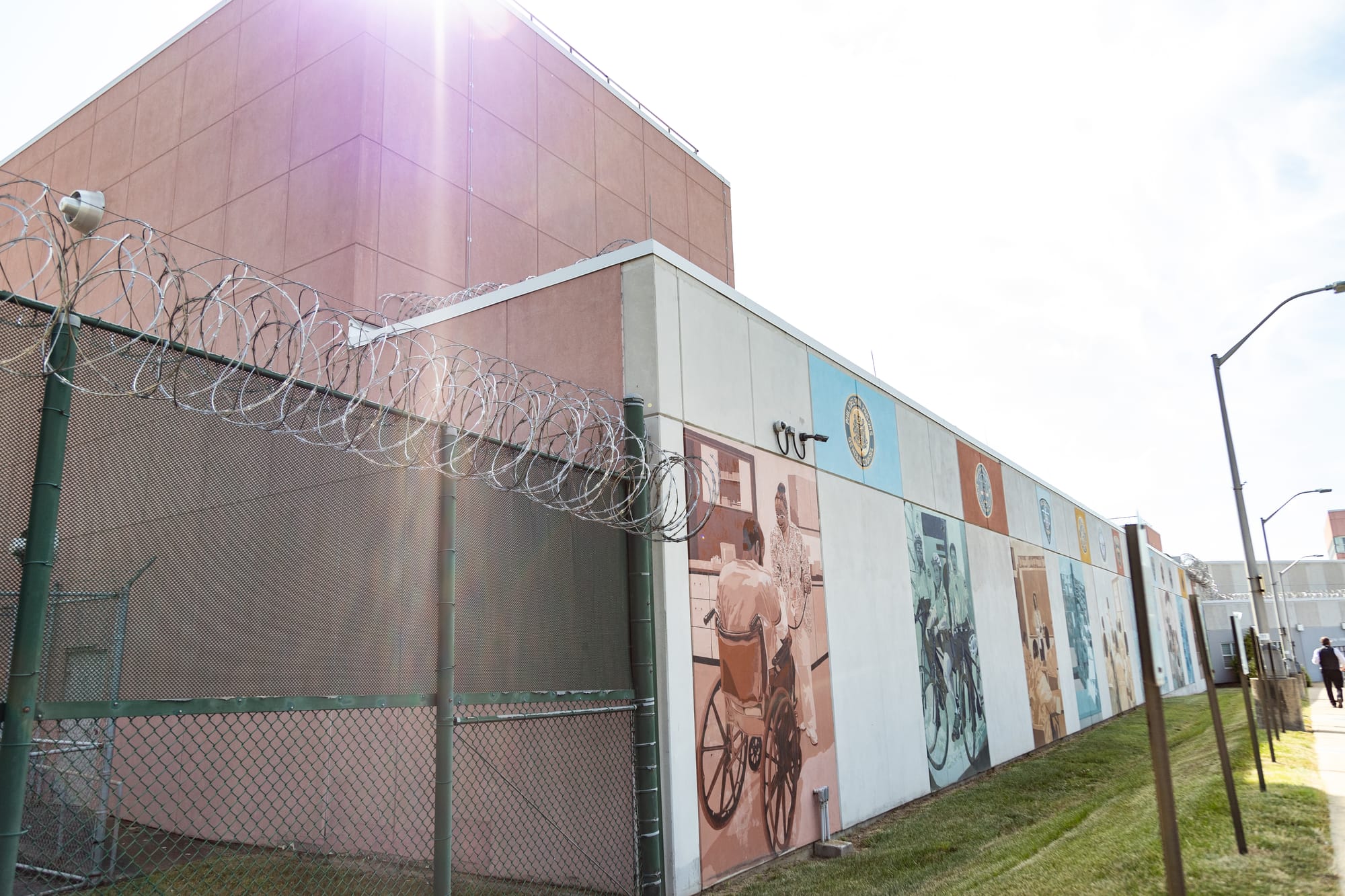
‘It’s like a conveyor belt’
The building capacity for Philly’s jails is under 5,000 people. However, in the October 2023 prison monitoring report, former Prisons Commissioner Blanche Carney recommended reducing the population to 3,500 without “a large influx of new staff.”
Herdman expects PDP to house about 18,400 unique individuals this year, and most will get incarcerated more than once. About 80% of people PDP sees have been detained there at least once before, with an average of nearly seven incarcerations per person. For people with serious mental illness, the average number of incarcerations is close to eight.
“We know a lot of these people,” Herdman said.
The idea of taking a criminal justice-forward approach to the current drug crisis, rather than leaning into treatment options at health facilities, is concerning for many, especially Black Philadelphians who still see their communities suffering from the heavy law enforcement tactics used during the crack epidemic of the 1980s and ’90s.
Roughly 90% of people incarcerated at PDP facilities are people of color – 72% are non-Hispanic Black, and 18% are Hispanic, according to an April court report.
Health advocates discussed the racial disparity at a hearing with the City Council Committee on Public Health and Human Services last month.
“A human body – particularly a Black body that goes through all this – it’s like a conveyor belt, like Ford making the Model T, except they’re not putting anything in, and they’re actually deconstructing it at every step,” said Samuel Kelton Roberts, an associate professor of history and sociomedical sciences at Columbia University, at the hearing.
Overdose deaths citywide are also increasing disproportionately for Black people. Between 2018 and 2022, while overdoses among non-Hispanic white people decreased by 12%, they increased by 87% among non-Hispanic Black people and 43% among Hispanic individuals, according to Deputy Health Commissioner Palak Raval-Nelson. Those numbers include overdose deaths that occur in Philadelphia jails.
Those who oppose incarceration worry that without secure housing or treatment facilities to step into after incarceration, people who use drugs in Kensington are going to end up right back where they were after living behind bars.
A 2018 report from the city of Philadelphia’s Reentry Coalition found that in 2015, the most recent year available as of the report’s publication, 34% of people released from Philadelphia Department of Prison or Pennsylvania Department of Corrections facilities were rearrested within one year.
“It’s the same,” said Sam Lew of the Abolitionist Law Center. “You can ask the police officers, you can ask the COs, you can ask treatment providers – it’s the same people who are going from system to system over and over and over again.”
The city spends over $64,000 per incarcerated person per year, according to Mitchell at PDP.
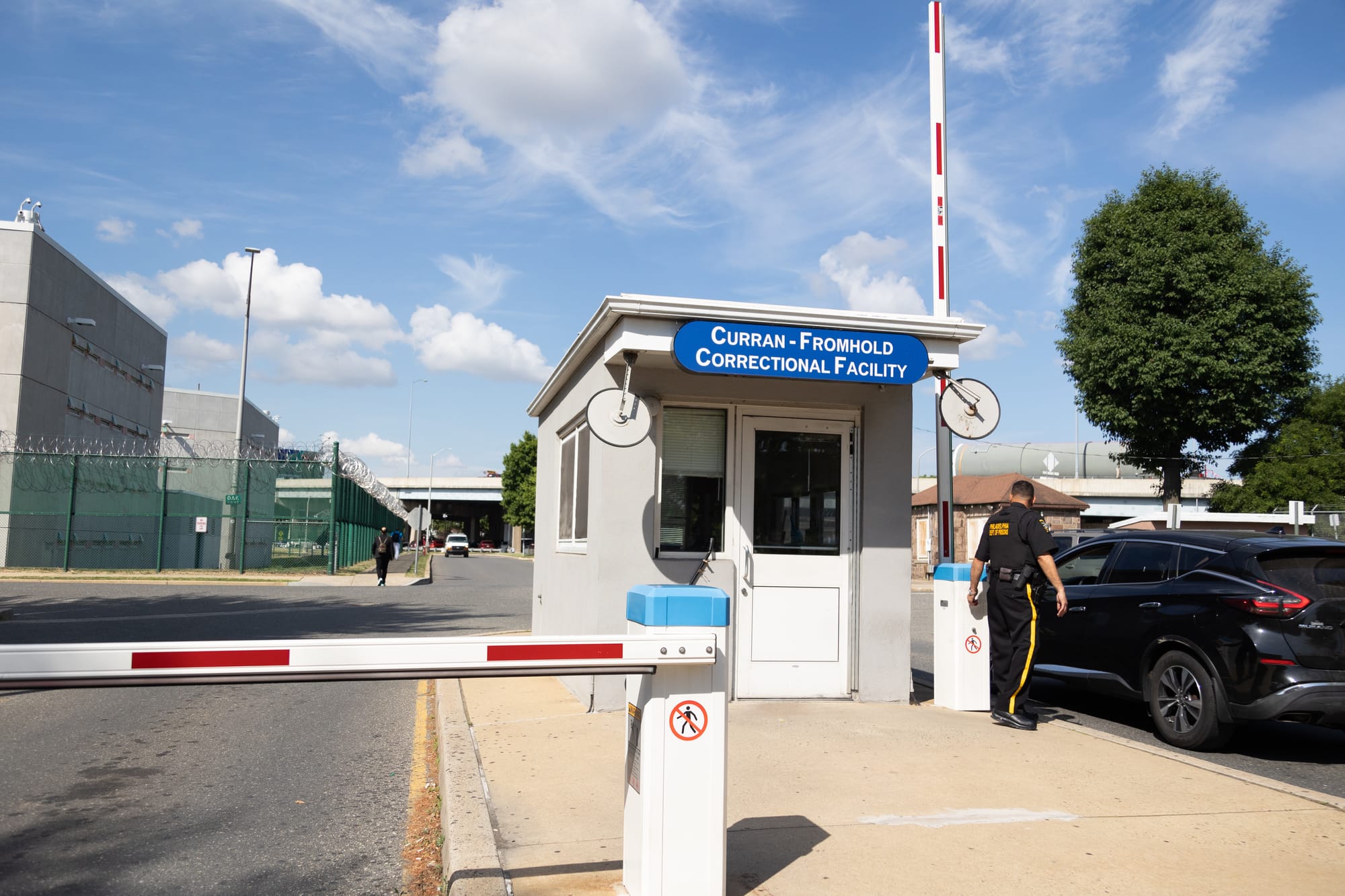
Who goes to State Road?
Most people charged only with drug possession in Philadelphia do not go to jail. Out of the 599 people arrested and charged exclusively with drug possession last year, 17 individuals, or 3%, were sent to a PDP facility, according to the District Attorney’s Office Data Lab. Those sent to PDP were there for a median length of 108 days.
After police arrest someone for drug possession who either refuses or is not eligible for the police-assisted diversion (PAD) program, they book them at either the Police Detention Unit (PDU) on Broad and Callowhill streets or the nearest district headquarters.
The person then waits in custody to get booked, which involves the police fingerprinting and photographing them. Next is arraignment, which means talking to a magistrate (a bail commissioner) through closed-circuit television.
During the arraignment process, the judge, a public defender, and a representative from the DA’s Office meet in a basement courtroom at the Juanita Kidd Stout Center for Criminal Justice on Filbert Street. By the time they meet, police have already recommended charges to the DA’s office, and the DA’s office has decided to press charges.
The magistrate reads the person’s charges and then releases them on their own recognizance, sets a bail, or determines they are ineligible for bail due to prior warrants or detainers. Some people are sent home and assigned a “sign-on bond” bail, meaning they must attend their first court date or pay the total bail amount.
Those who are not eligible for bail or cannot pay it are transported “up the road” to a PDP facility as soon as the next transport is available, according to Philadelphia Police Department spokesperson Sgt. Eric Gripp.
Arraignment is supposed to occur between 12 and 24 hours after arrest. Gripp said the length of time people wait to be arraigned depends on multiple factors, including how many other people are arrested across the city on a given day.
Andrew Pappas, pre-trial managing director for the Defender Association of Philadelphia, said the process of arresting and incarcerating people who use drugs poses a high risk of harm and even death.
“We have seen our defendants die in custody,” Pappas said.
Deaths in police custody are “unacceptable” and also preventable, he said.
“Someone who’s just injected heroin, fentanyl, etc., and then, as the police are approaching, immediately injects themselves again … that person is going to need medical attention,” Pappas said. “You can’t put that person in a cell.”
If the arresting officer determines they need to be hospitalized, they drive them to the hospital unless their condition warrants an ambulance, according to Gripp.
“If someone says at any time that they want medical attention, we take them to the hospital - full stop,” Gripp said. “If somebody is puking uncontrollably inside a cell, they’re going to get sent to the hospital.”

How treatment works
For intake, men go through Curran-Fromhold and either stay there or are housed at the Riverside Correctional Facility, the Philadelphia Industrial Correctional Center, or the Detention Center. All women go to Philadelphia Industrial for intake and housing.
The intake process is supposed to take between two to three days, according to the PDP “inmate handbook.” During intake, staff do a medical screening that involves collecting medical history, medications, and self-reported substance misuse.
Screening also involves scheduling people for various medical care services, Herdman added.Once people are cleared, they’re classified and assigned to a housing unit.
One recent health complication for people who inject drugs is necrotic wounds from xylazine, a veterinary sedative that has been found in as much as 90% of city-tested illicit opioid samples. Earlier this year, the city released a 27-page document on how to care for the blisters and lesions xylazine causes, typically on arms and legs.
The wounds PDP has seen lately are “a lot worse,” according to Herdman, and sometimes they require outside wound consultations. There are “wound care specialty-trained nurses” on staff, but he said they’ve requested two more.
“We expect this problem to get more serious,” Herdman said.
To treat opioid use disorder, PDP provides methadone and buprenorphine, known commonly by its brand name Suboxone, to anyone who already has a prescription for those medications. For people without a prescription, they can start Suboxone treatment while incarcerated. Only pregnant women can begin methadone.
Methadone is administered in the medical unit by staff from Northeast Treatment Centers, or NET. If people are unable to leave their cell blocks due to a lockdown, PDP nurses are authorized to administer the medication. Pregnant women receive methadone from NET in the jail’s facilities before and after childbirth, which occurs at Jefferson Hospital.
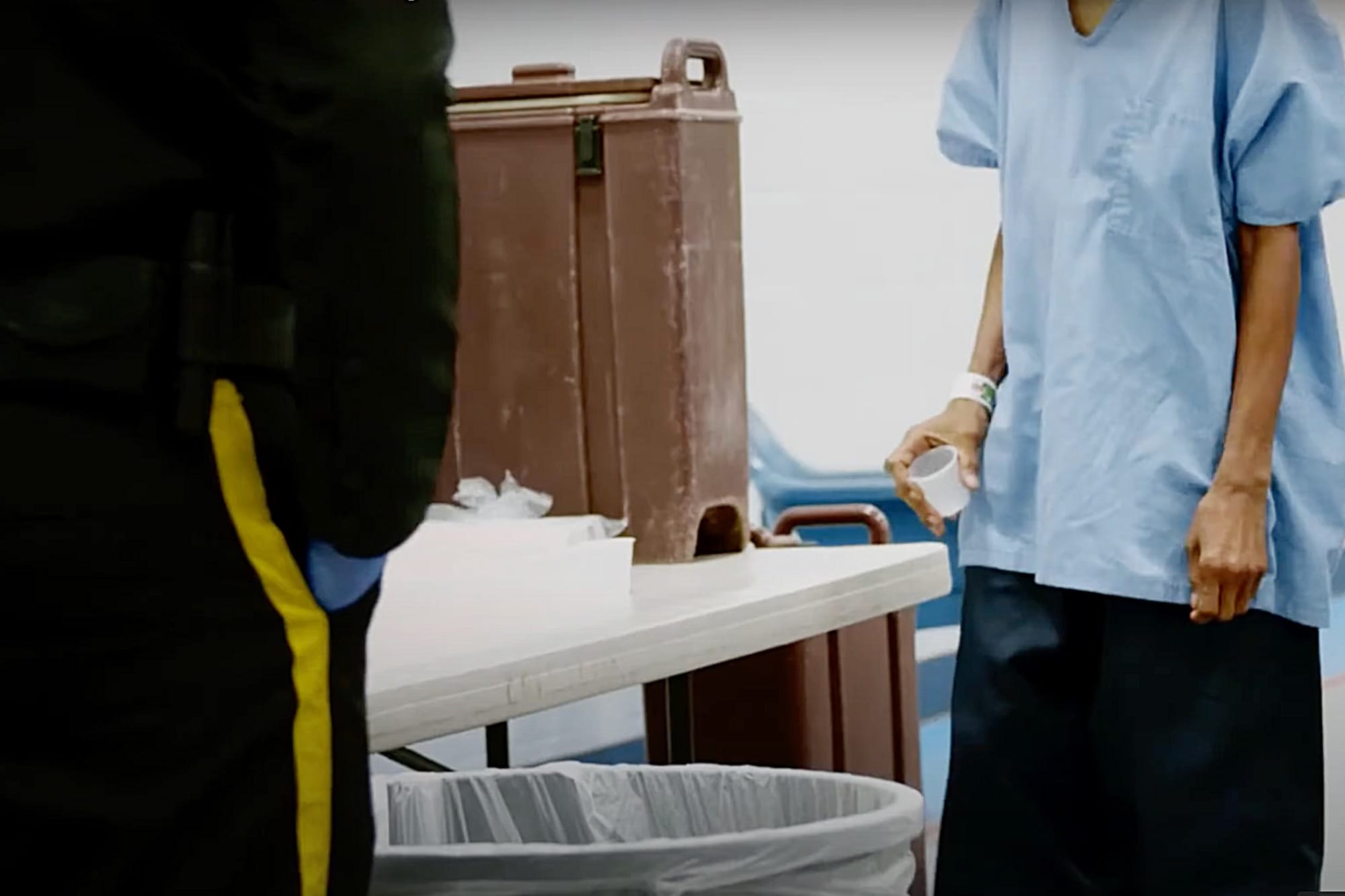
At RCF, buprenorphine is mostly administered by PDP health workers at the housing units. At CFCF, it's administered in the gymnasium. Unlike methadone, which can be dispensed quickly in the “pill pass” area of the medical unit, buprenorphine takes 10 to 15 minutes to administer, which is why it’s distributed in a separate area, Herdman said.
Patients are required to spread out and sit on their hands while the medication dissolves in their mouths, Herdman said. Most men on a new buprenorphine prescription get housed at Riverside to reduce the risk of redistribution.
Herdman recently worked with Philadelphia Department of Public Health officials to change the standard buprenorphine dose from 8 mg to 16 mg to improve the quality of treatment. That increase is supported by $1.4 million in opioid settlement funds, according to Herdman and city health workers.
The treatment PDP provides has been touted nationally as a model for other prison systems. In 2020, PDP was highlighted in a national training video for treating opioid use disorder in carceral settings through a federal grant from the Office of Justice Programs.
Still, advocates say the care is not adequate due to PDP’s staffing shortage.
“Philadelphia, on its face, has a policy that does provide for more treatment than some other jails across the state,” said Sarah Bleiberg Bellos, staff attorney with the Pennsylvania Institutional Law Project. "That does not mean in practice that people are actually getting that treatment."
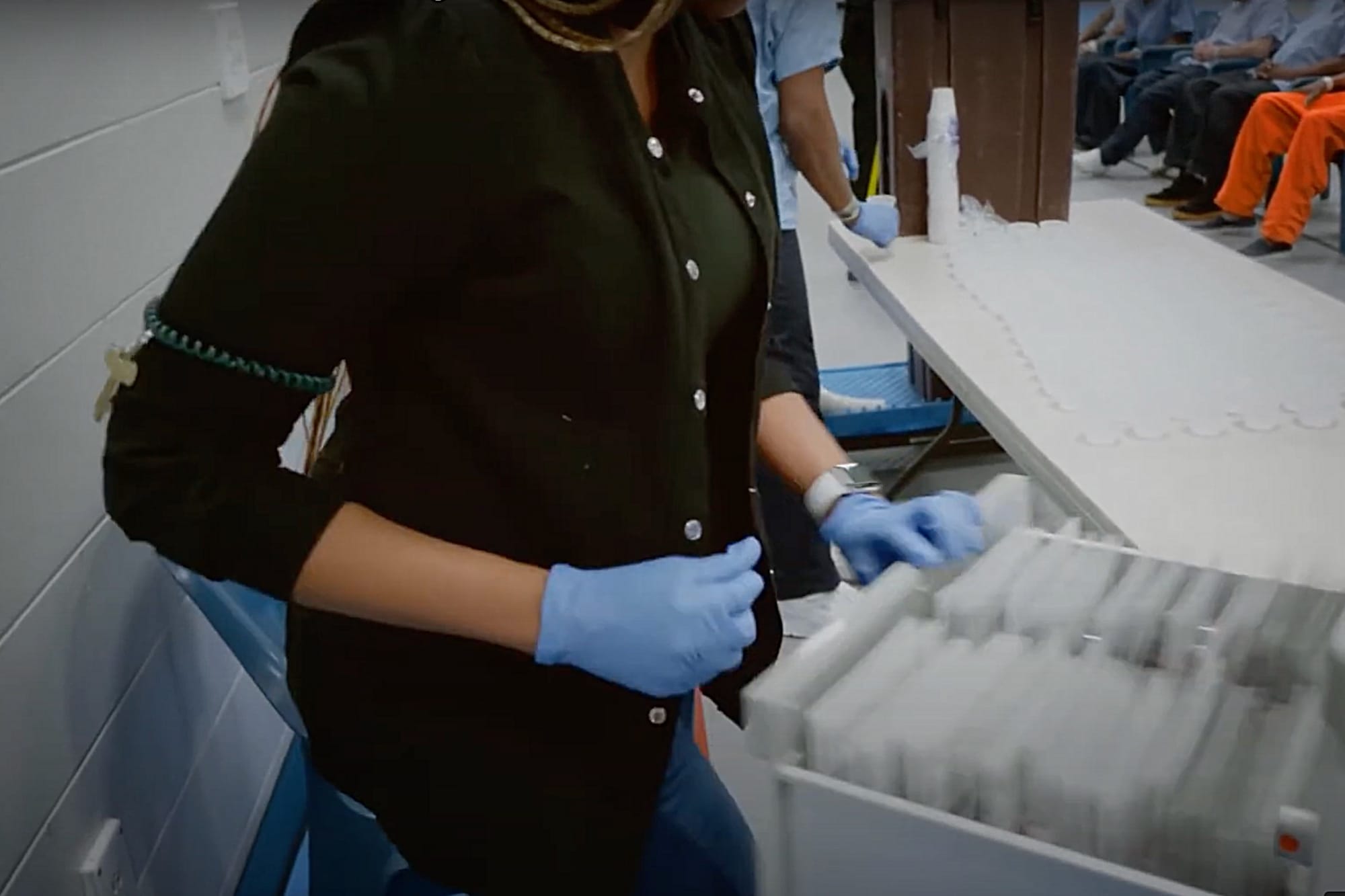
PDP does have a backlog in evaluations for medications for opioid use disorder. Recently, they decreased the backlog from 181 to 77 backlogged appointments weekly, according to Herdman. He said they accomplished the 57% decrease by allowing nurse practitioners to do the evaluations, as opposed to just physicians.
Understaffing also means fewer people who can respond in the event of an overdose. Since 2019, there have been 19 overdose deaths in the city's jails, according to Herdman. Of those, 16 died within the first week of arrival.
All corrections officers at Philadelphia Department of Prisons facilities are trained to use the overdose antidote naloxone, known by its brand name Narcan. Herdman said Narcan is stocked in locations throughout PDP’s facilities to minimize the distance an officer or health worker needs to run when there is an overdose.
“We can get there usually within two or three minutes,” he said. “But you know, different floors, different elevators, and these are big buildings … so we’re getting the Narcan out closer to the patient.”
According to Herdman, the staffing shortage has also made it difficult for PDP to continue offering cognitive behavioral therapy (CBT) because security officers are required to oversee group activities. Herdman hopes to get that program back up and running in the coming months as the shortage eases.

Risk after release
People who take medications for opioid use disorder while they are incarcerated do have “much better outcomes” than those who do not, according to Noa Krawczyk, a public health expert who studies addiction at New York University.
A 2023 study of a New York City jail, co-authored by Krawczyk, found that 30% of people who accessed medication for opioid use disorder while incarcerated went on to access similar care within 30 days after release, compared to 7% of incarcerated people who did not receive treatment behind bars.
In the days and weeks after release from jail, people who do not have access to medications for opioid use disorder, such as buprenorphine, have a higher risk of overdose because they lost their tolerance to opioids while incarcerated, according to Krawczyk.
“Having people be on medication at the end of their jail stay before their release is very protective against overdose,” she said. “People are also more likely to get connected and continue treatment after they’re incarcerated if they were receiving treatment while in jail.”
All incarcerated people with buprenorphine prescriptions at PDP facilities are released with five days of medication, which Herdman hopes will prevent them from overdosing until they find consistent care outside of incarceration. They also get Narcan.
The jail’s staff tries to set people up for success after release by providing them with photo identification and connecting them to drug treatment providers, including providers they may have been seeing while incarcerated, according to Herdman.
“We’re trying to get rid of these barriers to continuity of care before people leave,” he said.
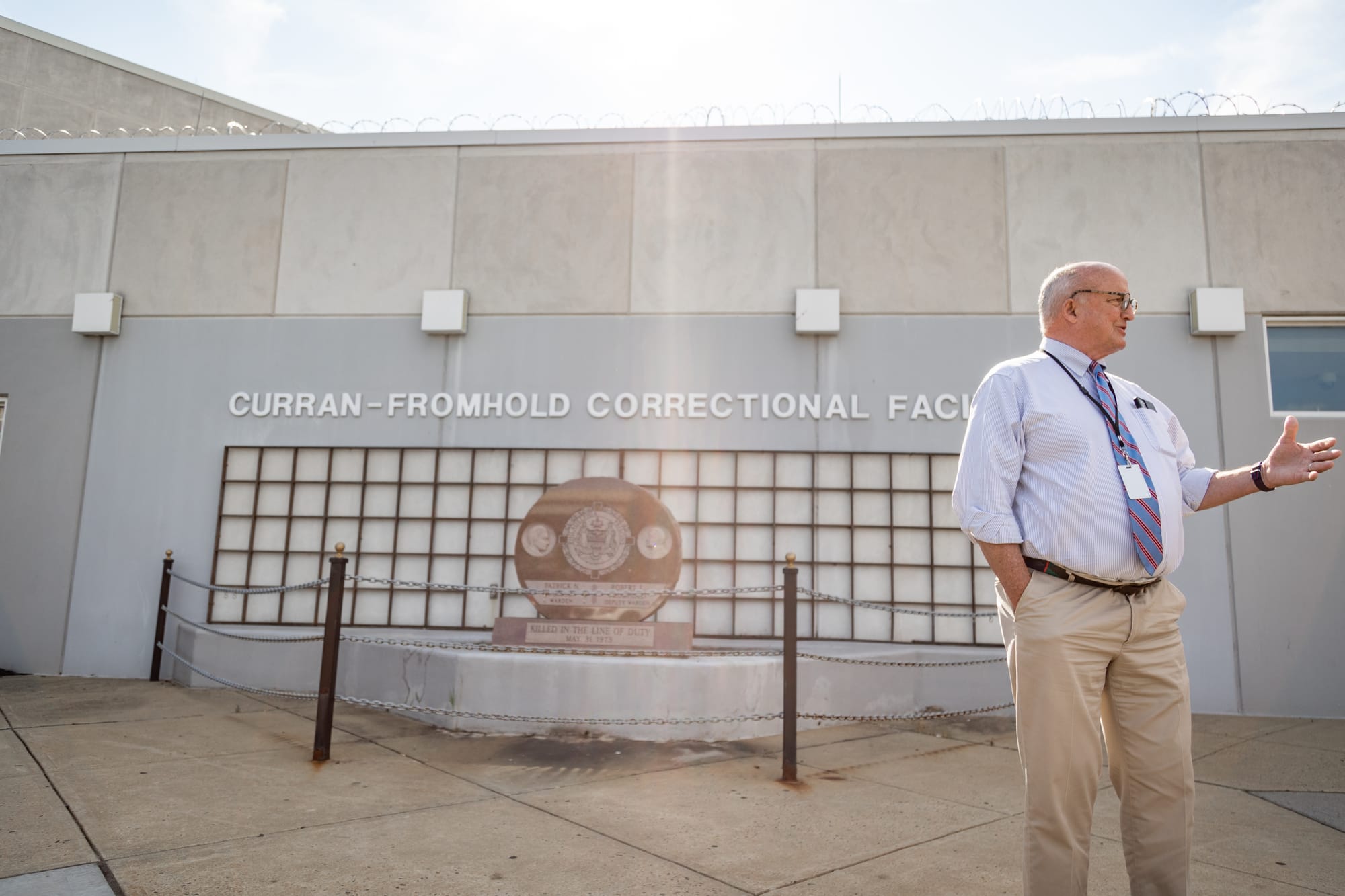
A PDP study cited by the Substance Abuse and Mental Health Services Administration in 2019 found roughly 30% of people who received buprenorphine in a PDP facility went on to receive treatment in the community.
Still, despite the impact these medications have on patient health outcomes after they’re released from jail, Krawczyk says the medications work best when administered in a calm, medically supervised, therapeutic setting.
“It’s not just that there are people who use drugs, and that’s why they’re high risk; it’s really the incarceration,” she said. “It’s not an effective public health strategy, despite there being an understandable desperation to try and do something about people really struggling with opioid use in this really dangerous drug supply era.”
There is also a lack of resource navigation for services beyond drug treatment, Herdman said. While the average self-reported years of education at PDP facilities is 11, he said the reading level is somewhere between fifth and sixth grade, and people generally lack employment prospects. These prospects then worsen once they have a criminal record.
“Where are they going to live? How are they going to get food for the kids? The wraparound services that you need is not something that we do well, nor does anybody else,” he said.
Housing remains a challenge for people leaving incarceration, Krawczyk said, which increases the risk that they’ll return to misusing drugs.
“A lot of our cities have not done well in terms of expanding housing when people actually need it,” she said. “Our safety net for people just has not really been there. So jail is not going to change that.”
The city is attempting to provide more support for people leaving incarceration through a new reentry initiative that pairs people with a Certified Recovery Specialist.
Beginning in July, roughly 500 people a year who are exiting a PDP facility and are already taking medications for opioid use disorder will receive help connecting with “housing, social, treatment, and other supports in the community once released,” according to a statement from the Managing Director’s Office.
The U.S. Department of Justice awarded the city funding for the Philadelphia Second Chance Act Reentry Initiative in 2022, and it’s been in the planning phase since then, according to a city spokesperson.
Two years ago, the Philadelphia Housing Authority expanded a reentry program to offer 30 housing vouchers to select individuals leaving incarceration – less than one percent of people incarcerated in the city on a single day. The program sunsets in November 2025, with an option to extend until 2027.
“That’s something we need to work on is to get wraparound services in place,” Herdman said. “We have a couple of pilot programs ... but it’s touching a small portion of the population.”
Have any questions, comments, or concerns about this story? Send an email to editors@kensingtonvoice.com.


